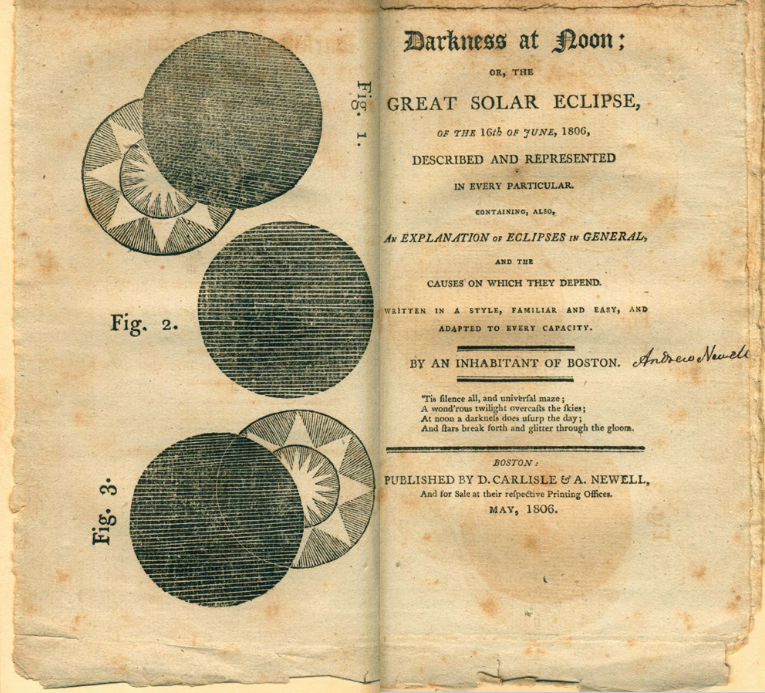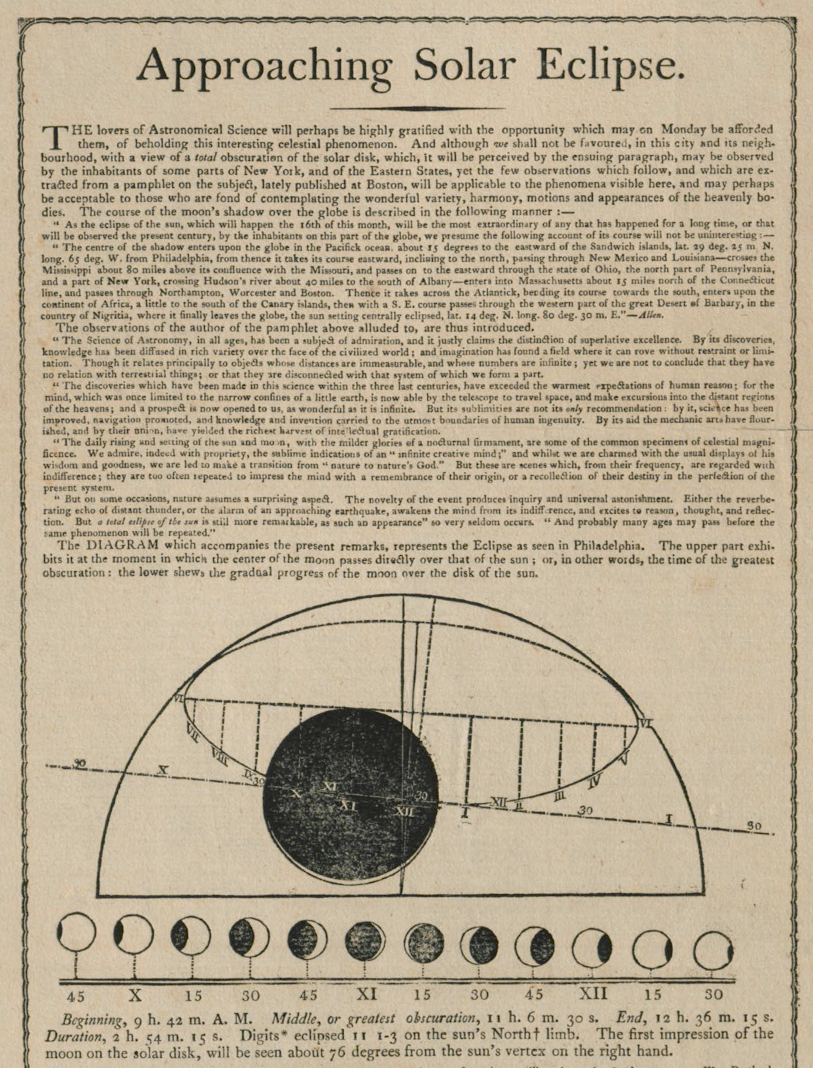How did you learn about the solar eclipse on August 21? Was it on the radio? In the newspaper? On TV? The internet or social media? From a friend? If you had lived two hundred years ago, how might you have heard?
Before there was the internet, radio and television, or even the telephone and telegraph, print was the primary broadcast medium—at least for those who could read. Printing houses, newspaper publishers, and small presses could be found in every town, churning out pamphlets, broadsides, and periodicals for a growing and increasingly literate populace hungry for the news of the day.
In June of 1806, just three years after the young United States had doubled its territory through the Louisiana Purchase, a solar eclipse passed over the northeast. In the months leading up to the event, publishers and scientists created printed guides to prepare the public for this arresting sight.
Materials from the Hagley Library’s collections help us understand how Americans experienced a major astronomical event over two centuries ago.
In Boston, where the eclipse would be total, instrument maker Andrew Newell published a pamphlet intended to help Bostonians understand and experience “Darkness at Noon.”

The bulletin described the eclipse as it would be seen from Boston, explained what stars and planets would be visible when the sun was obscured, and o ered advice on how to view the eclipse using “a piece of common window glass, smoaked on both sides su ciently to prevent any injury to the eye.” (If you are viewing today’s eclipse, please do not follow Newell’s advice!)
As someone who made a living crafting the precision instruments surveyors used to map the new nation’s coasts and landscapes, Newell was familiar with astronomy. His pamphlet also included information on the causes of eclipses, as well as a list of eclipses visible in New England from 1778 to 1811, and a catalog of major solar eclipses from 431 BC to 1438 AD.

In Philadelphia, where the sun would only be about 95% obscured, newspaper publisher John Poulson printed a broadside alerting residents to the “Approaching Solar Eclipse.” Though he quoted extensively from Newell’s pamphlet, Poulson offered Philadelphians a diagram illustrating what they would see on the morning of June 16, 1806, when the moon would begin to obscure the sun from the left side.
A broadside like this would have been displayed in a public place, much like a poster today, and would likely have reached a larger audience than Newell’s pamphlet. By reproducing large portions of the pamphlet in broadside form, Poulson brought Newell’s astronomical teachings to a wider public.
Though today we may learn of upcoming eclipses from a variety of sources, much of the information these outlets provide is quite similar to what Newell and Poulson sought to convey to their readers: when eclipses happen and why, what we can expect to see from where we’re standing, and how to watch without damaging our eyes.
Amrys O. Williams is the Associate Director and Oral Historian of the Center for the History of Business, Technology, and Society at Hagley Museum and Library.
